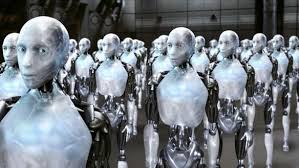Making Dumb Industrial Robots Smart Helps Them Work With Humans

published Mar 16th 2017, 6:39 pm, by Alex Webb
(Bloomberg) —
Forget robotic vacuum cleaners, medical assistants or butlers, for now industrial robots represent the greatest slice of the $34 billion global robotics market.
The classic industrial robot is a deaf and blind arm carrying out repetitive tasks reliably without a break. That also means they must be fenced off from people working on factory production lines, in case the humans inadvertently get in the way and are harmed.
Companies such as Autodesk Inc. are developing peripheral vision systems and software that help robots not only to carry out more complex and varying tasks, but also work closer to humans. The result? Robots can work in more situations where extra precision is required.
The appeal for factory owners is clear: German robot maker Kuka AG estimates a typical robot costs about 5 euros ($5.38) an hour to operate over its life. The hourly compensation cost of U.S. manufacturing was $36.49 per employee in 2013, according to The Conference Board.
It’s also an opportunity for a company like Autodesk, which makes manufacturing and design software. While $11.1 billion of industrial robots were sold in 2015, adding cameras, sensors and software to that equipment gave the sector a total value of $35 billion, the International Federation for Robotics estimates.
To contact the author of this story: Alex Webb in San Francisco at awebb25@bloomberg.net To contact the editor responsible for this story: Alistair Barr at abarr18@bloomberg.net
COPYRIGHT
© 2017 Bloomberg L.P



No Comment